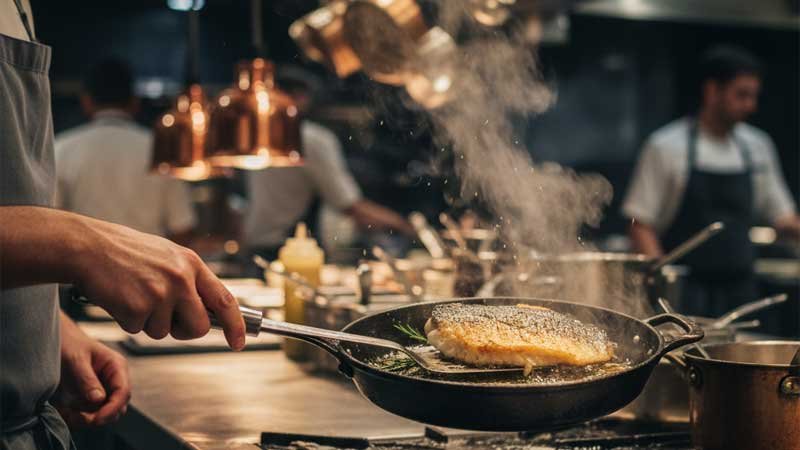A spatula is one of the most essential tools in any kitchen. From stirring batter and flipping food to scraping bowls, the right spatula can make cooking smoother and more efficient.
Silicone spatulas are popular for their flexibility, heat resistance, and easy cleaning, while metal spatulas are valued for their strength, durability, and professional feel. Choosing the right one depends on how and what you cook.

Material Differences: What Sets Silicone and Metal Apart?
The material of a spatula affects its performance, safety, and suitability for different tasks.
Silicone Spatula
- Made from food-grade silicone: flexible, elastic, and safe for food contact.
- Chemically stable: does not react with ingredients or release harmful substances.
- Smooth surface: resists bacteria and stains, easy to clean.
Metal Spatula
- Usually stainless steel or aluminum: strong and durable.
- Handles high-intensity tasks and hard foods well.
- May scratch nonstick surfaces, so careful handling is needed.
Physical Comparison
| Feature | Silicone | Metal |
| Heat Resistance | -40°C to 230°C (up to 300°C for high-quality) | Extremely high, but handle can get hot |
| Flexibility | High, bends to fit bowl or pan | Hard, limited flexibility |
| Nonstick | Naturally nonstick | Depends on surface treatment |
| Safety | Food-grade, BPA-free | High-quality stainless steel safe; low-quality may rust |
| Durability | Good for normal use; high heat or sharp objects may damage | Very durable, handles tough foods |
| Cleaning | Smooth, dishwasher safe | Easy, but must dry to prevent rust |
| Feel | Soft, comfortable | Hard, less comfortable over time |

Cooking Performance: Which Works Best?
Different cooking tasks favor different spatulas.
High-Heat Cooking
- Silicone handles frying, baking, and hot mixtures safely without damaging cookware.
- Metal can endure extreme heat but conducts it quickly; best for hard foods or caramelized surfaces.
Mixing and Stirring
- Silicone scrapes bowls clean and mixes batters, whipped cream, and meringue evenly.
- Metal is strong for dense mixtures but may leave residue in corners.
Stir-Frying
- Silicone protects pans, ideal for vegetables, eggs, and light meats.
- Metal works well for heavier or stickier foods but requires careful handling.
Baking
- Silicone scrapes pans clean and handles delicate ingredients precisely.
- Metal is suitable for cutting dough or dividing baked goods but less flexible in corners.
Tip: Use silicone for gentle tasks and metal for tough or heavy foods.

User Experience, Cleaning, and Value
Comfort
- Silicone: soft, elastic, and easy to grip. Perfect for scraping and delicate mixing.
- Metal: solid and sturdy, but long use may feel hard on hands.
Cleaning
- Silicone: smooth, dishwasher safe, resists stains. Avoid sharp tools.
- Metal: easy to wash but must dry to prevent rust.
Cost and Longevity
| Material | Price | Lifespan | Value |
| Silicone | Low to mid | Medium | High for home use |
| Metal | Mid to high | Long | High for heavy or professional use |
Choosing for Your Kitchen
Home Kitchen
Silicone is lightweight, easy to clean, and protects cookware. Great for baking and daily cooking.
Professional Kitchen
Metal is strong and heat-resistant, perfect for high-volume or intensive cooking.
Combination Use
Keep both: a large silicone spatula for scraping and mixing, a small metal spatula for hard foods and tough residues. This covers most cooking needs efficiently.

Conclusion
Silicone spatulas are soft, heat-resistant, nonstick, and easy to clean, while metal spatulas are hard, durable, and ideal for heavy-duty tasks. The best choice is to keep both in your kitchen, so you can handle different cooking needs with ease.
If you’re looking for reliable silicone spatulas, we can help you customize them to match your brand and market needs. Contact us today to discuss your order and start creating spatulas that fit your customers perfectly.